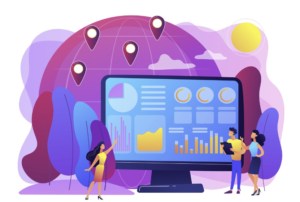Introduction
Welcome to a comprehensive exploration of Consumer Intelligence: Real-Life Instances. In this article, we delve deep into understanding consumer behavior, leveraging data for insights, utilizing cutting-edge technologies, analyzing market trends, and much more to gain valuable consumer intelligence.

What is Consumer Intelligence?
Consumer Intelligence refers to the process of gathering and analyzing data to gain insights into consumer behavior, preferences, and trends. It helps businesses make informed decisions, improve products/services, and enhance customer experiences.
Real-Life Instances
In real-life scenarios, exploring Consumer Intelligence: Real-Life Instances involves observing consumer behavior in various settings. For instance, studying how consumers interact with a new product in a store or analyzing online shopping patterns can provide valuable insights into their preferences and decision-making processes.
Understanding Consumer Behavior in Real-Life Scenarios
By observing and analyzing consumer behavior in real-life situations, businesses can tailor their marketing strategies, improve product offerings, and create personalized experiences for their customers.
Importance of Data
Data plays a crucial role in Consumer Intelligence: Real-Life Instances. Leveraging data analytics allows businesses to uncover hidden patterns, trends, and correlations that can lead to actionable insights.
Leveraging Data for Consumer Insights
By collecting and analyzing data from various sources such as customer surveys, social media interactions, and purchase histories, businesses can gain a comprehensive understanding of their target audience and their preferences.
Technologies
Advancements in technology have revolutionized Consumer Intelligence: Real-Life Instances. Various tools and technologies, such as artificial intelligence, machine learning, and data visualization software, have made it easier to extract meaningful insights from data.
Tools and Technologies for Consumer Intelligence
Platforms like Google Analytics, Salesforce, and Tableau offer powerful tools for gathering, analyzing, and visualizing consumer data, enabling businesses to make data-driven decisions.
Market Analysis
Market analysis is an essential aspect of Consumer Intelligence: Real-Life Instances. By closely monitoring market trends, competitors, and consumer behavior, businesses can stay ahead of the curve and identify new opportunities.
Analyzing Market Trends for Consumer Insights
Conducting thorough market research and trend analysis helps businesses understand consumer preferences, anticipate demand, and develop strategies to meet market expectations.
Predictive Analytics
Predictive analytics plays a significant role in Consumer Intelligence: Real-Life Instances. By using advanced algorithms and historical data, businesses can predict future trends, customer behavior, and market dynamics.
Using Predictive Analytics for Consumer Understanding
Predictive models can forecast customer preferences, identify potential churn, and recommend personalized offerings, enhancing overall customer satisfaction and retention rates.
Case Studies
Real-life case studies offer valuable insights into Consumer Intelligence: Real-Life Instances. By examining successful implementations and lessons learned, businesses can gain practical knowledge and apply best practices.
Real-Life Case Studies on Consumer Intelligence
Explore case studies from leading companies that have effectively leveraged consumer intelligence to drive business growth, improve customer experiences, and stay competitive in the market.
Challenges
While Consumer Intelligence: Real-Life Instances offer immense benefits, businesses also face challenges in gathering and interpreting data, ensuring data privacy, and maintaining ethical standards.
Overcoming Challenges in Consumer Intelligence
By implementing robust data governance policies, investing in secure data storage and processing systems, and prioritizing ethical considerations, businesses can overcome challenges and harness the full potential of consumer intelligence.
Future Trends
The future of Consumer Intelligence: Real-Life Instances is exciting, with emerging trends such as AI-powered analytics, IoT-driven insights, and hyper-personalization shaping the landscape of consumer intelligence.
Emerging Trends in Consumer Intelligence
Stay updated with the latest trends and innovations in consumer intelligence, including predictive modeling, sentiment analysis, and real-time data monitoring, to stay competitive and meet evolving customer demands.
Best Practices
Implementing best practices is key to success in Consumer Intelligence: Real-Life Instances. From data quality assurance to cross-functional collaboration, adopting best practices ensures accurate, reliable, and actionable insights.
Implementing Best Practices for Consumer Insights
Learn how leading organizations optimize their consumer intelligence strategies through data integration, continuous monitoring, and regular performance evaluations, driving business growth and customer satisfaction.
Ethical Considerations
Ethical implications are crucial in Consumer Intelligence: Real-Life Instances. Respecting consumer privacy, transparency in data usage, and ethical decision-making are paramount for building trust and credibility.
Ethical Implications of Consumer Intelligence
Understand the ethical challenges associated with consumer intelligence, such as data privacy concerns, algorithm bias, and responsible data stewardship, and learn how businesses can uphold ethical standards while harnessing consumer insights.
Also Read: Consumer Data Platform India
Conclusion
In conclusion, Consumer Intelligence: Real-Life Instances offer a wealth of opportunities for businesses to gain valuable insights, understand consumer behavior, and drive strategic decision-making. By leveraging data, technology, and best practices while addressing ethical considerations, businesses can unlock growth, innovation, and customer-centricity in today’s dynamic market landscape.






